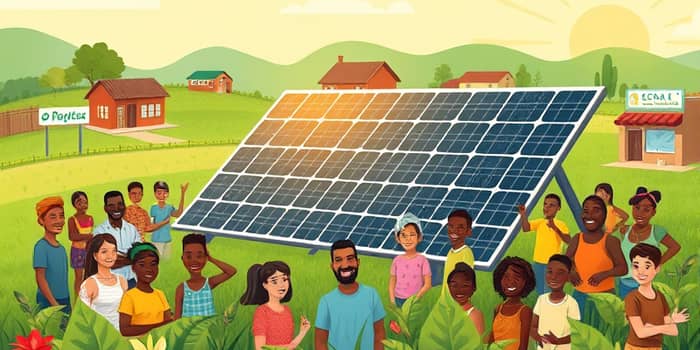
Community-focused solar co-ops are revolutionizing the way individuals, renters, businesses, and organizations access clean energy. By pooling resources, participants can share the benefits of a single solar installation without requiring rooftop panels.
This article explores how shared investment in solar projects can deliver both economic returns and environmental impact, all while strengthening local communities.
Solar co-ops remove common barriers—such as property ownership or high upfront costs—and open pathways for anyone to harness the power of the sun.
Community solar, also called shared solar, allows multiple subscribers to invest in a centrally located solar array, often under 5 MW in size. Instead of installing panels on individual rooftops, participants purchase or subscribe to “blocks” of kilowatts, receiving monthly credits on their utility bills for their share of generated electricity.
The entire system is managed by a co-op or solar provider: from installation to maintenance, ensuring no maintenance or technical hassles for subscribers. This model democratizes solar access, enabling renters and those with unsuitable roofs to participate equally.
One of the most compelling advantages of community solar co-ops is their micro-investment structure. Instead of large upfront payments, participants can commit to modest blocks—often around 1 kW each—with a small initiation fee and predictable monthly charges.
Average U.S. ROI for solar investments hovers near 10%, with payback periods of 9–14 years. Over a 25-year panel lifespan, participants might see lifetime savings of over $24,000 on a $16,500 initial commitment, reflecting real-world financial returns of nearly 50%.
Beyond economics, community solar drives significant environmental benefits. Every kilowatt-hour generated reduces fossil fuel dependency and mitigates carbon emissions.
Participants often report a deep sense of shared purpose and pride, knowing they contribute to cleaner air, healthier ecosystems, and a more resilient power grid.
Joining a solar co-op usually involves a straightforward application process. Key steps include evaluating site availability, reviewing program terms, and selecting your subscription level.
Many programs allow transfers within the same utility territory, adding flexibility for renters and mobile households. Always verify whether waitlists exist, as demand often outstrips supply in thriving markets.
As with any investment, understanding risks and ensuring regulatory compliance is crucial. Choose co-ops that provide full, standardized disclosure of benefits and potential downsides, including administrative fees and expected maintenance protocols.
Confirm that the project adheres to securities, tax, and consumer protection laws, and inquire about contingency plans if the array underperforms or shuts down prematurely. A reputable co-op will have solid track records of long-term operational assurances and capital protection.
Community-focused solar co-ops represent more than an investment vehicle—they are a catalyst for sustainable, equitable growth. By opening renewable energy to all community members, these co-ops forge stronger social ties and shared responsibility for our planet’s future.
Whether you’re looking to reduce your utility costs, hedge against rising energy prices, or contribute to climate action, micro-investing in a solar co-op offers a win-win solution. As solar penetration goals climb toward 40% by 2035, the time to join the movement is now.
Together, we can harness clean, abundant sunlight, turn small investments into lasting impact, and cultivate resilient, thriving communities powered by solar innovation.
References













